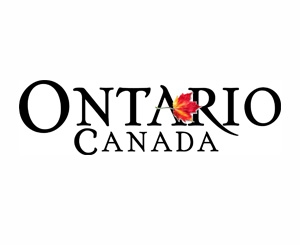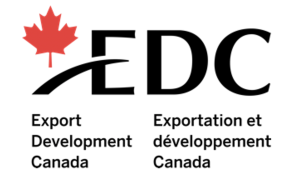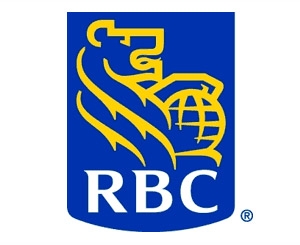How the Canadian Economy is Adjusting to Global Forces
Remarks to the CCCJ, June 9, 2005
How the Canadian economy is adjusting to global forces
I am happy to have the opportunity to be back here in Tokyo, and to address this group. No matter where you are in the global economy these days, everyone is talking about the same powerful, economic forces. We are all aware of the large and growing financial imbalances in the United States and in Asia. Rapid growth in emerging-market economies is driving up demand for commodities, and that has pushed up world prices for oil and many non-energy commodities. Meanwhile, productivity improvements in some countries and a competitive world environment are lowering the prices for some consumer goods, communications services, and computer equipment. All of these forces are causing significant movement in the exchange rates of key currencies, including a sharp appreciation of the Canadian dollar against the U.S. dollar over the past couple of years. In short, these are challenging economic times, not just in Canada and Japan, but throughout the world.
Today, I’d like to raise two issues. I’ll talk first about how the Canadian economy has been adjusting in the face of these forces—an adjustment that is being facilitated by the Bank of Canada’s monetary policy framework. Then, I’ll talk briefly about what needs to be done internationally to help bring about an orderly resolution of global imbalances.
Adjustments in the Canadian economy
So let me begin with the Canadian economy. I should set the scene by saying just a few words about how the Bank of Canada conducts monetary policy.
The Bank of Canada Act calls on the Bank to "mitigate by its influence fluctuations in the general level of production, trade, prices and employment, so far as may be possible within the scope of monetary action, and generally to promote the economic and financial welfare of Canada." The way we do this is by trying to keep inflation low, stable, and predictable. Specifically, we aim to keep the annual rate of consumer price inflation at the 2 per cent midpoint of a 1 to 3 per cent target range.
In order to keep inflation at the target, we try to keep the economy operating at full capacity. By this, I mean that we aim for a balance between total demand and supply in the economy. Simply speaking, if the demand for goods and services is pushing the Canadian economy against the limits of its capacity, and if inflation is poised to rise above the target, the Bank would raise its key policy interest rate. This, in turn, would push up other interest rates and help to cool off demand. Conversely, if the economy is operating below its production capacity, and inflation is poised to fall below the target, the Bank would lower its key policy rate, to help stimulate demand. So, by maintaining low and stable inflation, monetary policy also promotes greater stability in economic output.
I should add that since Canada adopted its inflation-targeting system in 1991, our track record has been excellent. Inflation has averaged very close to 2 per cent and has remained within the target range, with rare exceptions that were due mainly to large swings in the prices of oil and natural gas. And we have seen evidence that our symmetric approach to inflation targeting has helped to smooth the peaks and valleys of the business cycle.
I should also add that a flexible exchange rate is a critical part of our monetary policy framework. We do not have a target or preferred exchange rate for the Canadian dollar. But it is an important relative price in our economy. A floating currency helps us to achieve our inflation target and can act as a shock absorber to cushion our economy from the effects of events both inside and outside Canada. I’ll say a bit more about this in a few moments.
With that as background, let's now look at the ways in which Canada's economy is responding to global economic developments. As I mentioned, the Canadian dollar has appreciated sharply and commodity prices have risen dramatically over the past couple of years, though both have been relatively stable in recent months. Canada’s terms of trade—that is, the ratio of the prices that Canadians receive for their exports to the prices that they pay for their imports—have improved by about 15 per cent since late 2001, generating higher real incomes and stronger domestic demand in Canada.
How has the Canadian economy reacted to these higher prices and stronger demand? In the Bank’s April Monetary Policy Report, we noted that we have seen increased business investment spending in oil and gas extraction, other mining activity, and wood-product manufacturing. We are also seeing rising investment in sectors that are not very exposed to international trade, such as electric power generation, finance and insurance, and information and cultural industries. In these cases, firms are reacting to strong growth in Canadian domestic demand. As well, we’ve had very strong investment in residential housing.
But there are other sectors, highly exposed to international trade, where prices are either not rising or are rising very slowly. Here, I am referring to goods-producing sectors such as auto parts, textiles, and clothing manufacturing, as well as service sectors such as tourism. Firms in these industries are feeling the pressure of the higher Canadian dollar, and they are also facing increased competition from other regions of the world.
The good news is that many Canadian firms are making adjustments. Investment spending is being directed towards increased specialization, higher productivity, and lower costs. Since much of the productivity-enhancing machinery and equipment is priced in U.S. dollars, the stronger Canadian dollar has made it easier for firms to buy tools that boost their productivity. Stiffer competition is encouraging firms to increase their specialization and offer more value-added, customized services.
Other adjustments are also taking place. A growing number of firms are looking to cut costs by importing more inputs. We've certainly seen this type of adjustment taking place among the manufacturers of telecommunications equipment. Other firms are phasing out the production of goods and services with low profit margins and concentrating on those that yield higher returns.
Looking at the economy as a whole, we can see that growth will come primarily from domestic demand this year and next, as the past appreciation of the Canadian dollar continues to restrain net exports. As we noted in our last Monetary Policy Report, we expect the Canadian economy to move back to its production capacity in the second half of 2006. But of course, our outlook remains subject to both upside and downside risks. These are related largely to the global developments and associated relative price changes that I have already mentioned, and the way that the Canadian economy is adjusting to these factors.
How is the Bank of Canada contributing to the adjustment process? At this point in time, monetary policy is aiming to maintain strong growth in domestic demand. Low interest rates help encourage consumer and business spending, which in turn helps keep the economy operating close to its production potential.
This is an important point in terms of the adjustment process. Because we keep inflation low and stable, businesses and consumers are better able to read price signals in markets, and this helps them to make better long-term decisions in the face of major economic developments. These price signals prompt sectors that are shrinking because of weak demand to release resources that can be absorbed by expanding sectors, where demand is strong. Of course, adjustment takes time, and is never simple or without pain. Individuals may have to retrain or relocate, and expanding businesses may require time to put the necessary capital equipment in place to increase productivity. And of course, some firms will go out of business and some people will be unemployed for a period of time. But from a macroeconomic point of view, adjustment can take place with less social and economic cost overall when inflation expectations are well anchored, the economy is operating close to its potential, and a floating exchange rate is helping to absorb external shocks.
International adjustments
That’s a quick look at how the Canadian economy is adjusting to global forces. Our flexible exchange rate is helping to bring about movements in the real exchange rate, which is what matters in terms of the adjustment process. But this is not the case everywhere. Where the nominal exchange rate is fixed, the only way to bring about adjustments in the real exchange rate is through large movements in relative wages and prices. This is theoretically possible if wages and prices are highly flexible, both upwards and downwards. But in practice, wages and prices aren’t that flexible. And so when exchange rates are fixed, adjustment can still take place, but it comes at a high cost—through shrinking output and rising unemployment in countries with current account deficits, and eventually through very high inflation in countries with current account surpluses.
While this adjustment is costly, it does work, provided countries that are fixing their currencies through foreign exchange intervention are not offsetting the monetary consequences of this by “sterilizing” the intervention. This is an important point. When intervention is sterilized, this temporarily prevents the movements in wages and prices needed to bring about the necessary economic adjustment. In these cases, economic adjustment is postponed—in both surplus and deficit countries. But the adjustment and its costs are only delayed, they are not avoided. Indeed, the costs typically end up being larger than they would otherwise be, precisely because they have been delayed. The only way to truly minimize the costs of adjustment is to allow nominal exchange rates to move around.
For decades, Canada has benefited from having a flexible exchange rate that can help bring about economic adjustments. By the end of the 1990s, most industrialized economies and a number of emerging-market economies had also arrived at the same conclusion. But other economies, particularly but not exclusively here in Asia, have opted for a fixed exchange rate regime. And unfortunately, some have rejected the adjustment mechanisms that should go along with such a regime. By sterilizing their interventions, they are accumulating even larger foreign exchange reserves. But more importantly, they are undermining the efficiency of their own domestic economy, and interfering with the resolution of imbalances.
Because of this and other impediments, global imbalances are growing, and this is increasing the risk of a disorderly correction at some point down the road. Furthermore, the longer the adjustment is delayed, the greater the risk that industrialized nations will take protectionist measures against emerging-market economies that are perceived as not playing by the rules. And this may be the greatest threat to the global economy—a rise in protectionism which could choke off the growth of international trade that has led to rising incomes around the world.
So what is to be done? The adoption of appropriate exchange rate regimes is an important start. But this is only one element of a policy framework that will facilitate adjustment and promote the resolution of global imbalances. First, we all must actively support the Doha round of talks at the World Trade Organization (WTO), recognize the legitimate role of the WTO as arbiter of international trade, and resist calls for protectionist measures in our own economies—measures that will ultimately hurt us all. Second, we all must enhance the flexibility of our domestic markets. Third, we all must create and maintain a sound financial system. Finally, we all must follow appropriate fiscal and monetary policies.
We know what needs to be done to help our economies adjust to global economic forces. We all talk a good line about these policies, but action has been slow. If we can get on with the job, not only will we help ourselves, we will also improve the long-term prospects for the global economy. And that is an outcome that’s in everyone’s interest.




























